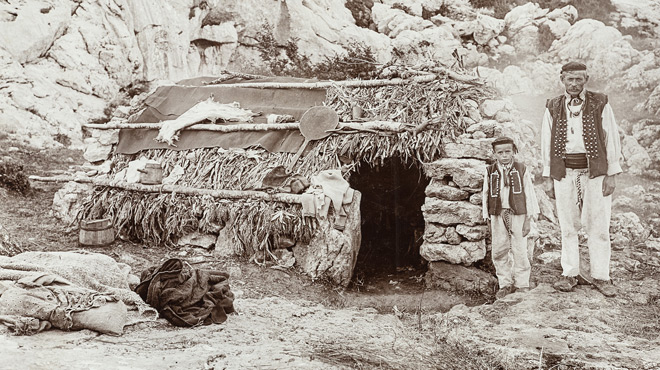Customs and traditions

The cultural and historical traditions of the southern, coastal side of the Velebit Mountain, which falls almost directly into the sea, have not changed in their essentials ranging from the period of the ancient Illyrians all the way up to the twentieth century. The inhabitants of the Velebit have always been migratory stock-breeders, who according to the seasons moved with their treasure (herds) from the sea coast to the highest sections of the Velebit. Their herds were truly their greatest treasure, as they enabled them to survive.
This led to a form of animism, a belief in the “spirituality” of everything both alive and dead, including domestic animals. “Even herd animals have a soul” (as was claimed by the local inhabitant Pera Jović, 1882-1977). From medieval times, the magical-mythic concepts of the Velebit people were supplemented by religious concepts, creating a type of syncretism. Christianity was “refl ected” up from the sea, while in the mountain sett lements and stock-raising summer lodges the spirit of the ancient beliefs and customs was retained, which up to the first half of the 20th century led to an intermingling of these two worlds.
While in the Croatian coastal cultural centers of the period, magnificent monuments of various European architectural styles were created, in the hinterland, in the Dalmatian Highlands, in the regions of Bukovica and Ravni Kotari, and in the Velebit Mountain, a form of rustic art originated, including the “mirilo” or virtual tombstone – the “resting place of the soul”.
The mirilo (frequently referred to in the collective plural as mirila), a relatively small form of stone sculpture, represents a specific manifestation of spiritual and material culture. These unique monuments of an unusual funerary custom in fact unfettered (freed) the Velebit inhabitants (or Velebićanini) from any fear of transience and of death. In terms of the form of the stone slabs (headstones and footstones), the iconography of the relief images, and their location alongside paths and routes, they seem to be related to the well-known megalithic monuments, the STEĆCI tombstones, unique medieval sepulchral monuments that can be found along the entire extent of the Dinaric Mountain Range. No other analogies whatsoever are known.
Photo gallery